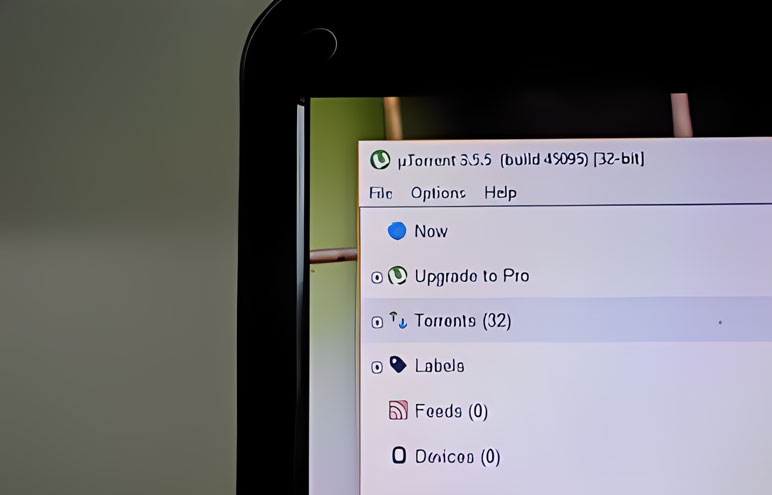The digital age has brought about a myriad of ways to share and distribute information. One of the most popular and controversial methods is through torrenting. At its core, torrenting is a decentralized method of sharing files, but how does it work? This article delves into the intricacies of the BitTorrent protocol, shedding light on its mechanics and its significance in the world of digital file sharing.
Key Takeaways
- BitTorrent is a peer-to-peer (P2P) communication protocol
- It allows for decentralized file sharing, reducing the need for central servers.
- The protocol breaks files into pieces, distributing them among peers, which are then reassembled by the downloader.
- While torrenting itself is legal, it can be used for illegal activities, which has led to its controversial reputation.
A Brief Understanding of Torrenting
Before diving into the specifics of the BitTorrent protocol, it's essential to understand the broader concept of torrenting. In essence, torrenting is a method of distributing files across the internet without relying on a single source or server. Instead of downloading a file from a single location, users download bits and pieces of the file from multiple sources simultaneously. This decentralized approach has several advantages:
- Efficiency: Files can be downloaded faster as they're sourced from multiple locations.
- Resilience: If one source fails or is slow, others can pick up the slack.
- Reduced Server Load: Since there's no central server, there's no single point of failure or bottleneck.
However, it's worth noting that while the act of torrenting is legal, it can be used to share copyrighted material without permission. This illegal use has given torrenting a somewhat tarnished reputation in some circles.
How BitTorrent Works: The Basics

BitTorrent, as a protocol, is the engine behind the concept of torrenting. It's a set of rules and conventions that dictate how files are shared and downloaded in a P2P network. Here's a step-by-step breakdown of how it works:
1. Torrent Files and Trackers
A user wishing to share a file creates a 'torrent' file. This file doesn't contain the actual data to be shared but instead has metadata about the file, such as its size, structure, and the network location of pieces. It also contains information about a 'tracker', which is a server that helps coordinate the file distribution.
2. Breaking Down the File
The original file is broken down into small chunks, often ranging from a few kilobytes to a few megabytes in size. This division allows for the simultaneous downloading of different pieces from different sources.
3. Peers and Seeders
Once the torrent file is created, the user becomes a 'seeder', meaning they have the complete file and are sharing it. Other users who download the torrent file and begin downloading the data are called 'peers'. As peers download pieces of the file, they also start uploading those pieces to other peers, further distributing the file
4. Completing the Download
As a peer downloads all the pieces of the file, the BitTorrent client software reassembles them to recreate the original file. Once the download is complete, the peer can choose to continue sharing the file (becoming a seeder) or stop sharing.
The Role of BitTorrent Clients

While the BitTorrent protocol lays out the rules for P2P file sharing, it's the BitTorrent clients that users interact with. These are software applications that implement the protocol and provide a user-friendly interface for torrenting. Popular clients include uTorrent, qBittorrent, and Transmission, among others
1. Choosing a Client
The choice of a BitTorrent client often comes down to personal preference, the platform you're using, and specific features you might need. Some clients are lightweight and barebones, while others offer advanced features like built-in search engines, bandwidth control, and media playback.
2. Magnet Links
In addition to traditional torrent files, many sites now offer "magnet links." These are essentially hyperlinks that contain all the information needed to start a download, eliminating the need to download a separate torrent file. When clicked, these links automatically open your BitTorrent client and begin the downloading process
The Controversy Surrounding Torrenting

As mentioned earlier, while the act of torrenting is legal, it's the type of content being shared that can lead to legal issues. Many users utilize torrents to share copyrighted material without authorization, leading to significant legal battles and efforts to shut down torrent sites
1. Legal Implications
Many countries have strict copyright laws, and sharing copyrighted material without permission can lead to hefty fines and even jail time in some cases. It's essential to be aware of the laws in your country and to ensure you're not infringing on anyone's rights
2. Safety Concerns
Another concern with torrenting is the potential for downloading malicious software. Since anyone can share files, there's no guarantee that the file you're downloading is safe. It's crucial to have robust antivirus software and to be cautious about the sources from which you're downloading
Closing Statement
The BitTorrent protocol revolutionized the way we share and download files, offering a decentralized approach that's efficient and resilient. However, with its capabilities come responsibilities. It's essential to use torrenting ethically, respecting copyright laws, and being cautious about potential threats. By understanding how BitTorrent works and being aware of its implications, users can make informed decisions and enjoy the benefits of P2P file sharing responsibly